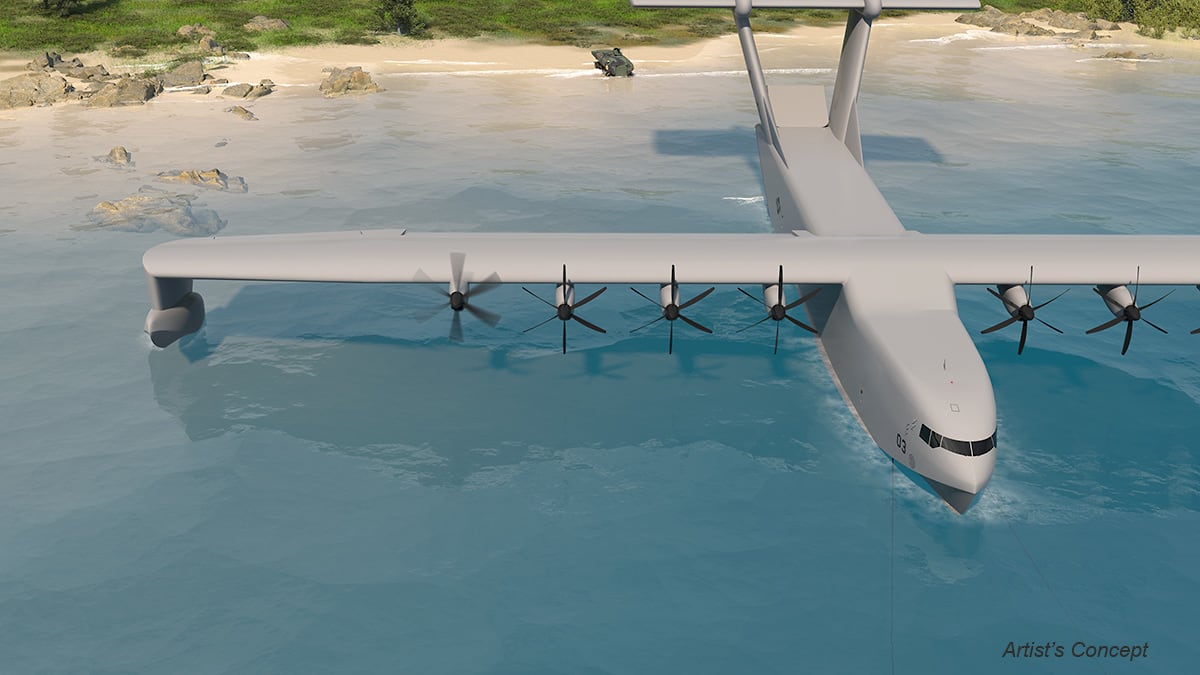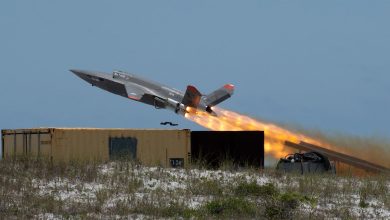The Defense Advanced Research Projects Agency has ended its experiment to create a heavy cargo seaplane.
The nearly three-year-old Liberty Lifter program was intended to design and build — and possibly float and fly — a long-range, low-cost seaplane that could take off and land in rough seas. DARPA said in 2023 that it wanted the plane to have roughly the same size and capacity as a C-17 Globemaster, which can carry more than 170,000 pounds of cargo such as M1 Abrams tanks.
In a statement to Defense News, DARPA confirmed it had concluded the Liberty Lifter program in June. Aviation Week first reported the ending of the Liberty Lifter program.
“We’ve learned we can build a flying boat capable of takeoff and landing in high sea states,” program manager Christopher Kent said. “The physics make sense. And we’ve learned we can do so with maritime building techniques and maritime composites.”
But DARPA said it will not move forward with building an aircraft, which would only be a demonstrator.
“We think our findings validate the hypothesis we had going in: you can build platforms that fly significantly cheaper and at significantly more locations than we do today,” Kent said. “This opens up a pathway for next generation aircraft to be built using far more efficient construction technologies.”
DARPA also said more work needs to be done to blend maritime construction with aircraft certification.
In a statement to Defense News, Aurora said the technology it developed through the program will be used in years to come.
“Through the Liberty Lifter program, we were able to show the viability of the design and the feasibility of novel manufacturing techniques,” Aurora said. “Aurora is proud of the technical advancements we made through the preliminary design of Liberty Lifter, and we expect to apply these learnings to future programs.”
DARPA first worked on Liberty Lifter with General Atomics and Boeing subsidiary Aurora Flight Sciences, which developed their own competing designs.
DARPA hoped creating a cargo seaplane could lead to new opportunities for the military and commercial organizations to conduct fast logistics missions, as well as develop innovative manufacturing techniques and materials to bring down the cost of building large aircraft.
DARPA said it restructured the Liberty Lifter program in late 2023 to pull forward technical risk reduction activities. In early 2024, DARPA announced it had dropped General Atomics from the program and continued with Aurora’s pitch.
Aurora and DARPA used simulations and tests of scaled models to demonstrate the seaplane’s technical design, as well as building and stress-testing examples of the new methods and materials intended for the plane.
Those simulations and tests showed the concept was viable, DARPA said, and the novel building methods one day could help dramatically cut the cost of building large aircraft. The agency is now working with industry and other stakeholders in the Defense Department to figure out how to rapidly field these technologies in other forms.
The contracts and modifications DARPA issued to Aurora and General Atomics totaled at least $22 million, with $8 million going to General Atomics and $14 million to Aurora.
Stephen Losey is the air warfare reporter for Defense News. He previously covered leadership and personnel issues at Air Force Times, and the Pentagon, special operations and air warfare at Military.com. He has traveled to the Middle East to cover U.S. Air Force operations.
Read the full article here







